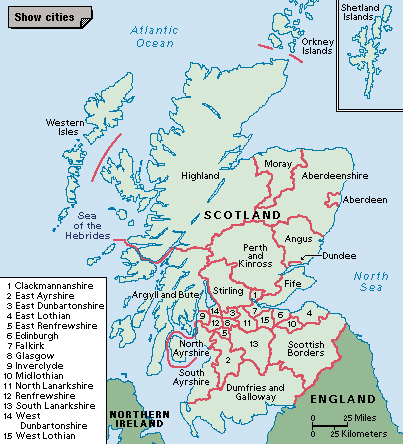Falkirk (pop. 158,404) is a council area in central Scotland. In Scottish Gaelic, Falkirk is called An Eaglais Bhreac. The town of Falkirk is a thriving center of light engineering. Falkirk’s Carron Iron Works was once the largest smelter in Europe. Other industries include automotive industries, munitions, whisky distilling, and the production of candies, chemicals, clothing, electronics components, lumber, and plastics. The Falkirk Wheel, the world’s only rotating boat lift, connects the Forth and Clyde Canal to the Union Canal 115 feet (35 meters) above. The port of Grangemouth has an important oil refinery. The Scottish engineer William Symington built the first practical steamship there in 1802.
Across the district, the Antonine Wall stretches about 37 miles (60 kilometers) from West Kilpatrick on the River Clyde to Carriden on the Firth of Forth. The Roman army built the wall in the A.D. 140’s as a defensive barrier against the unconquered northern tribes. Parts of the wall still stand today.
In 1298, troops led by the Scottish warrior William Wallace were defeated by an invading English army near Falkirk town. A second Battle of Falkirk occurred in 1746 when Scottish rebels under Charles Stuart defeated Royal British forces. A monument on the South Muir marks the battlefield.
See also Stuart, Charles Edward; Wallace, Sir William.

